Carol Es: Exodus
By MEGAN ABRAHAMS, APR. 2015 In a series of revelatory paintings and mixed media collages that document a literal journey to Joshua Tree along with a personal quest for catharsis, Los Angeles based artist Carol Es has combined landscape imagery, desert icons and symbols of the Kabbalah, opening a veritable portal into her artistic psyche. As recorded in the light-hearted yet poignant six-minute animated video memoir complementing the exhibit, the artist declares, ďI have a lot of anxiety, wasted years, regret and depression. Then thereís fear -- fear of failure, fear of success, fear of not being special -- and depression. Most of my work reflected that.Ē As if prescribing her own cure from this existentialist malaise, Es set off on a ten-day spiritual exodus to Joshua Tree National Park in the spring of 2014, hoping the new environment would offer inspiration while providing respite from her past burdens. Once ensconced in the desert, she meditated, studied a different Hebrew letter every day, explored the mystical teachings of the Kabbalah, wrote a journal, photographed her surroundings and devoted much of her focus to sketching. While looking through her sketchbooks on her return, she noted the dominant theme in these drawings was a repeated motif -- circles which represented rocks -- prevalent throughout the desert panorama. The eventual work inspired by the journey evolved largely from those circle drawings. In particular, the series of paintings, Abstracted Desert Landscape, feature clusters of irregular connected circle shapes in shades of rose, subdued browns and grays congregating in the middle ground, and forming hills mounting up toward the sky. Above all, what Es has conveyed so dramatically in the paintings is the pure essence of the intense blue desert skies -- the backdrop to her visual narrative. In Drum Lab, (2015, Oil on Gessobord, 24 x 30 inches) the sky is a profound expansive blue, fighting to expand beyond the limits of its rectangular borders. Under her portrayal of these skies, the artist has depicted the prolific rock circle shapes, assorted cacti, trees and other vegetation springing out of the foreground, along with random man-made structures, sculptural oddities and other products of an unbridled imagination, which pervade these thematically connected detail-rich images, verging on dreamscapes. The largest painting in the exhibit, Ladder to Dad, (2014, Oil on canvas, 40 x 60 inches) features a striated sky of violets and blues, rising behind an expanse of desert described in pastel shades. In the background, a vivid green ladder climbs outside the frame into the infinite reaches of the sky, apparently reaching for the artistís father. The skies are also tied to the ambient light of the desert environment, which Es seems to have carried home as another memento from the trip. Her paintings emit the singular quality of desert light, infusing her palette with a newfound brightness. In her companion series of multi-media collages, Es has extrapolated some of the forms and motifs she observed in the desert, which were the source for these intensely colorful abstract compositions. The collages are somewhat more derivative of some of the artistís earlier work, simple forms and patterns with a similar playful flavor.
Included in the exhibition is a display of selected ephemera the artist collected during her journey. Like souvenirs from more conventional travel, these curious objects add depth and verisimilitude to the overall presentation. A crushed beer can, the rusted lid of a tin, a photograph of a tree, are all relics which figure in the painted compositions like a cast of characters at curtain call who weíve just seen acting in the play. In Chairs in the Desert (2014, Oil on canvas, 16 x 20 inches) Es presents more assorted detritus, such as a mop and metal tubing in a rustic sculptural form. Telephone poles and electricity wires are juxtaposed onto the desert wilderness. The significance of these objects is further addressed in the artistís soul-baring video, co-produced with Jonathan Nesmith and Susan Holloway. The video, Up to Now, plays on a continuous loop on a small monitor in a yellow and white tent in the project space. Photographs, sketches and field notes from the trip decorate the tentís interior. Sitting on camp chairs, viewers are offered a taste of the artistís expedition and an insight into the nature of her self-imposed retreat.
Es followed in the footsteps of a number of artists who have sought refuge and renewal in the California High Desert. Most notable for his more indelible footprint, Noah Purifoy, who lived there for the last 15 years of his life, left behind as part of his legacy an outdoor art museum of assemblage sculptures -- an enduring Joshua Tree landmark. In acknowledgement, Es devoted a full day of her exodus to visiting Purifoyís outdoor sculpture garden. In the Abstracted Desert Landscape series, Es pays homage to Purifoy, her imagery referencing his whimsical and sometimes dark juxtapositions on the desert scene. It is heartening that Exodus documents a spiritual retreat that inspired a fulfilling new direction for the artist. As she had hoped, this journey provided Es with the impetus to begin painting about the present, instead of dwelling on the baggage of the past. There is an aura of serenity in these works, which glow with evidence of the solace the self-taught artist appears to have ultimately found in the landscape, and the peaceful aura there. In her video, Es refers to the silence she experienced in Joshua Tree. ďThe desert is a wide open space with endless skies, but the sound was soft like pillows.Ē The paintings convey an air of quiet as well as solitude. Perhaps itís even possible to infer a sense of the artistís act of self-reflection. The images denote traces of human presence and art that had already been woven into the land -- a drum set, playground toys, dilapidated structures, the shell of a space capsule -- subjects blatantly incongruous with the natural desert setting that have nonetheless become integrated, made a home in the artistís rendering of place. Despite the curious man-made references and the artistís figments of fantasy, which are integral to the compositions, the images are devoid of figures. Esís vast vistas are lonely spaces peopled by ubiquitous rocks. Invited inside these scenes, becoming absorbed in them, it is easy to envision the artist standing alone, beyond the visible foreground, finding herself immersed in the magnitude of the landscape, lulled by the soothing quiet. WM
|

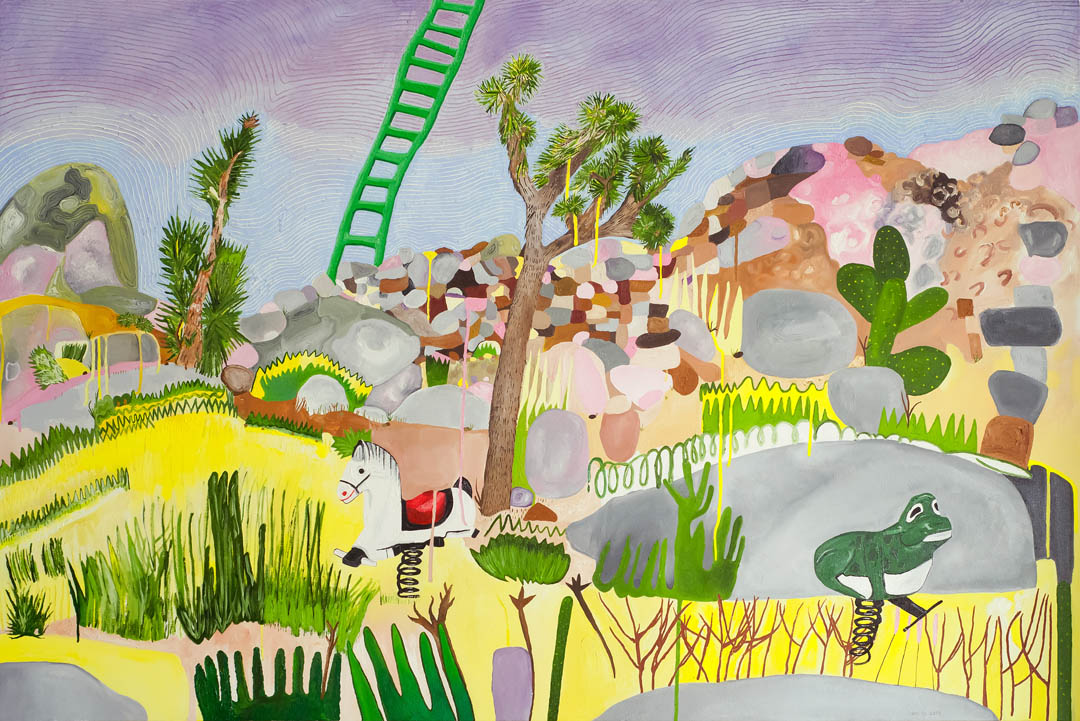 Carol Es, Ladder to Dad, 2014, Oil on Canvas, 40 x 60 inches
Carol Es, Ladder to Dad, 2014, Oil on Canvas, 40 x 60 inches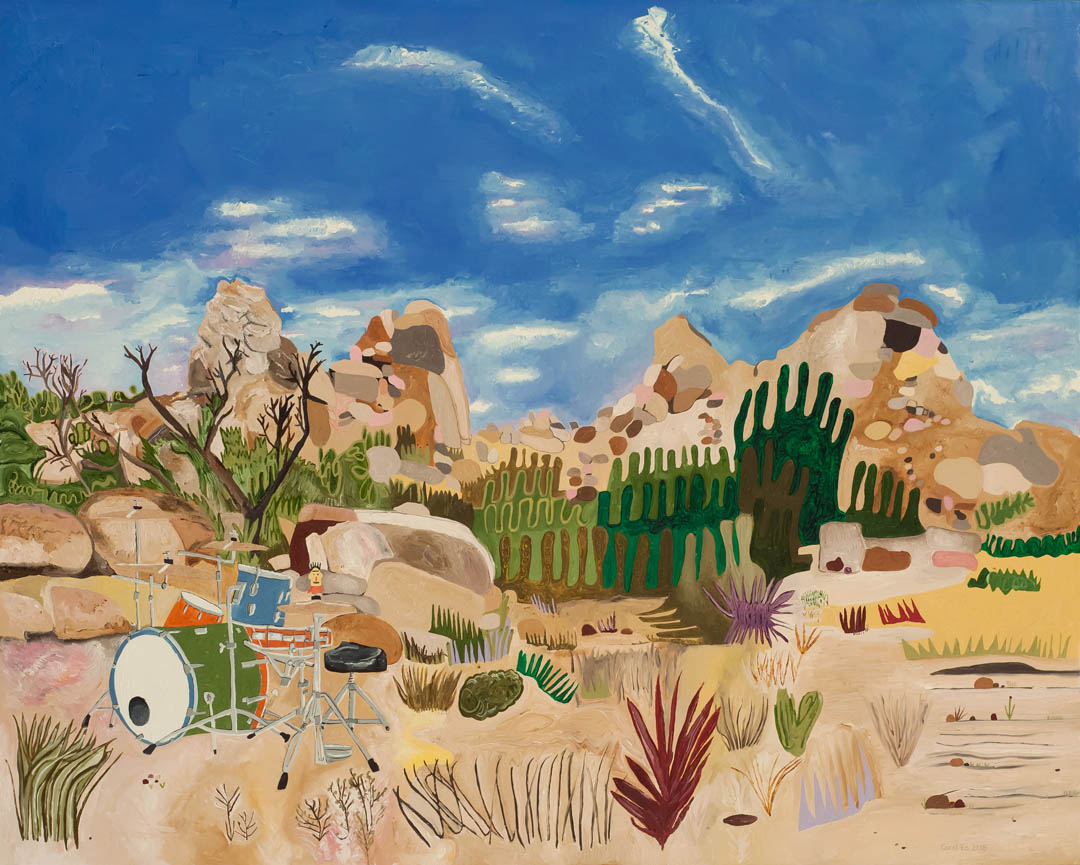 Carol Es, Drum Lab, 2015, Oil on Gessobord, 24 x 30 inches
Carol Es, Drum Lab, 2015, Oil on Gessobord, 24 x 30 inches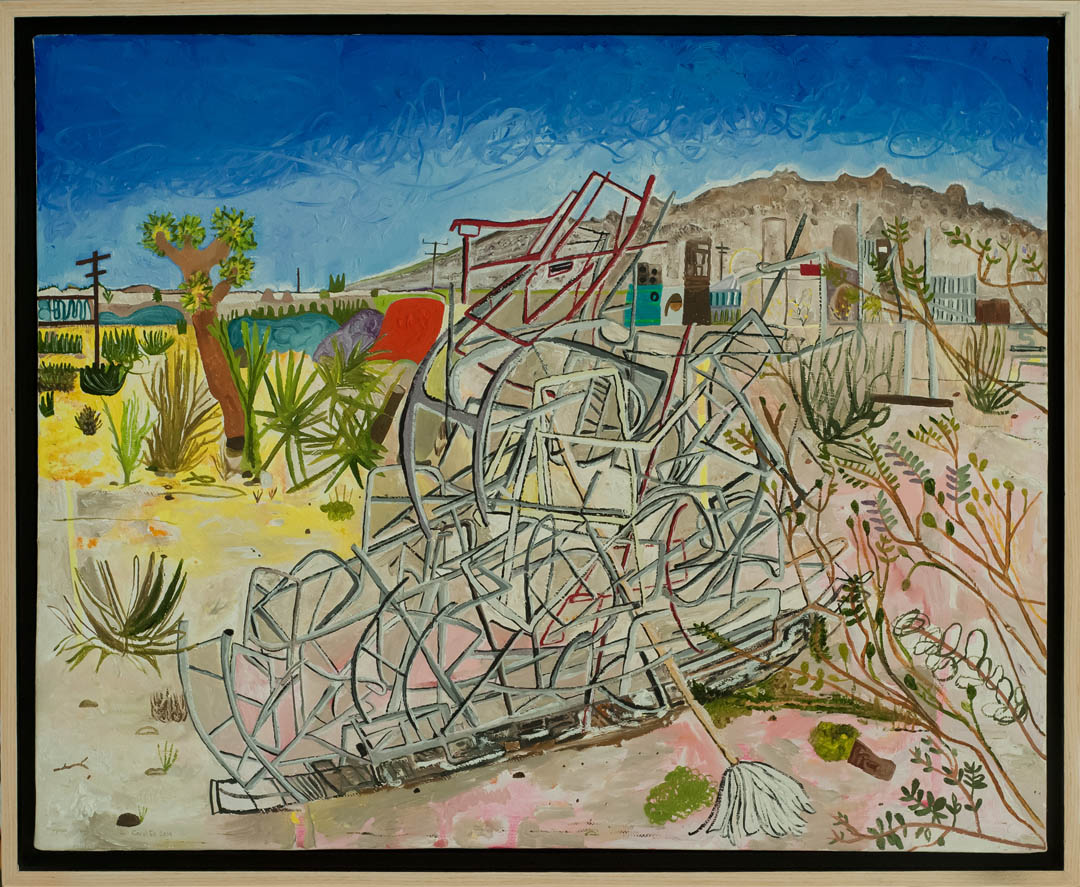 Carol Es, Chairs in the Desert, 2014, Oil on canvas, 16 x 20 inches
Carol Es, Chairs in the Desert, 2014, Oil on canvas, 16 x 20 inches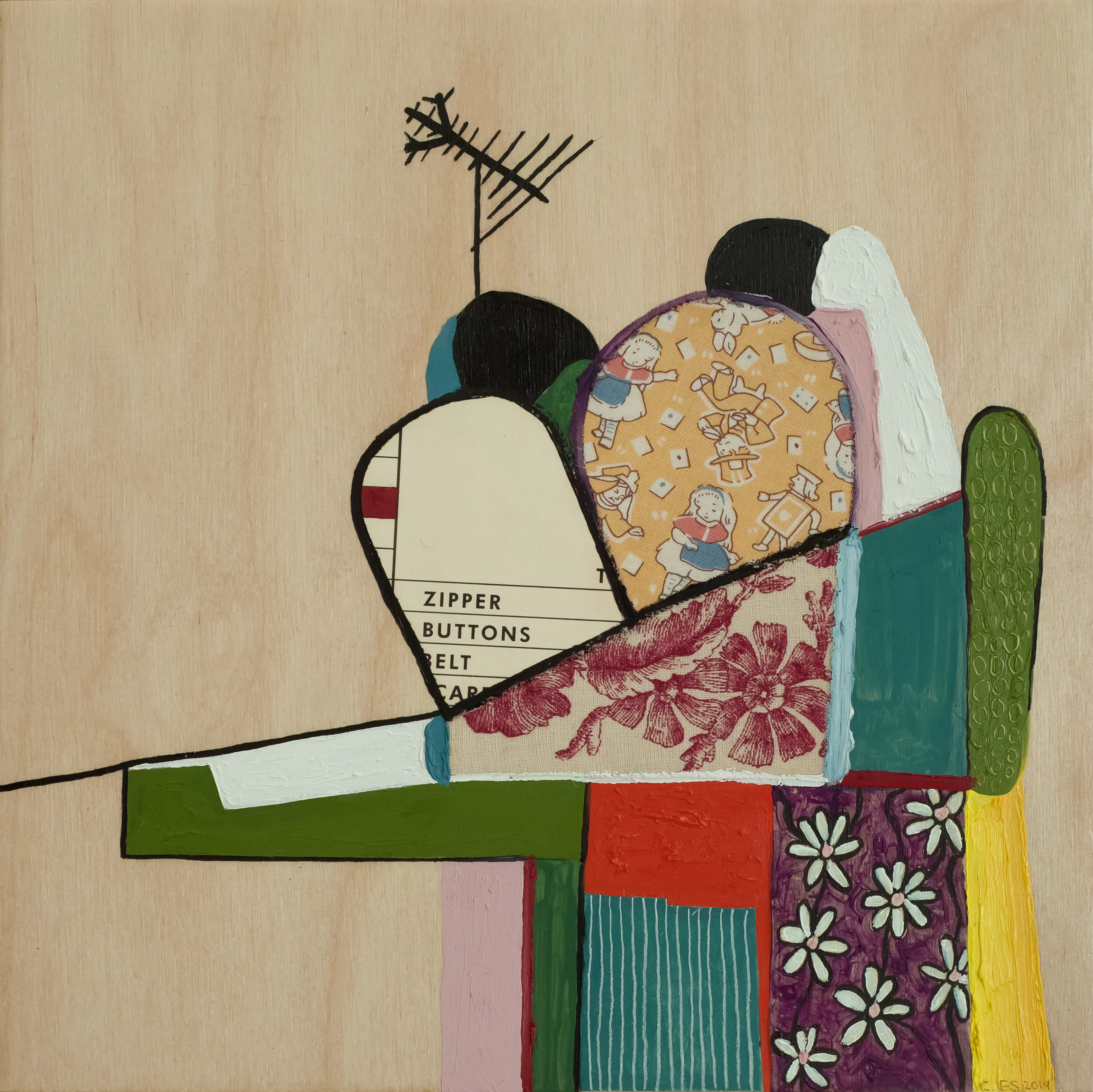 Carol Es, Sleep Lander, 2014, Mixed media on panel, 10 x 10 inches
Carol Es, Sleep Lander, 2014, Mixed media on panel, 10 x 10 inches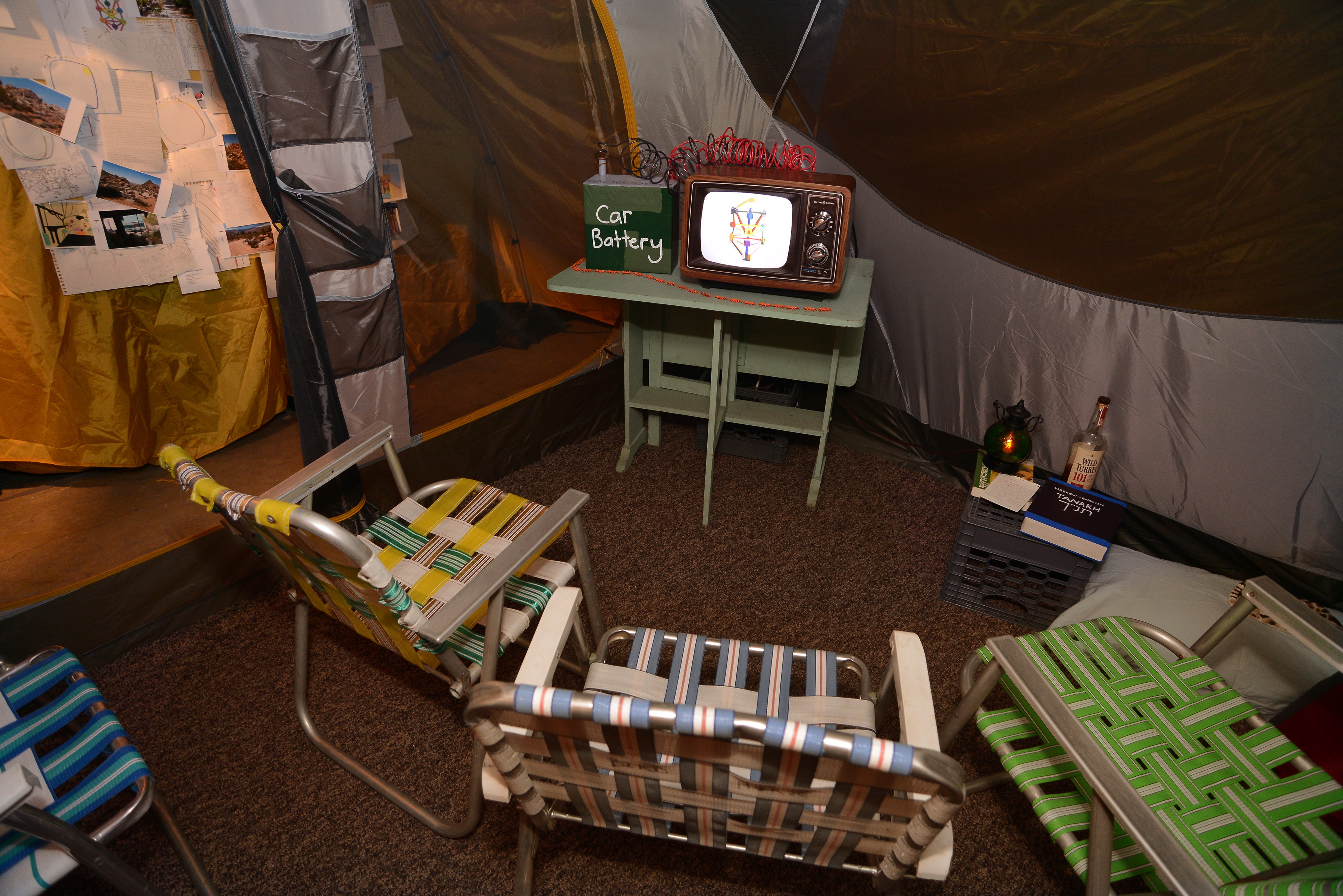 Carol Es, Exodus installation
Carol Es, Exodus installation